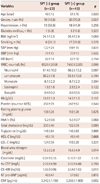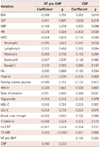1. Prinzmetal M, Kennamer R, Merliss R, Wada T, Bor N. Angina pectoris. I. A variant form of angina pectoris; preliminary report. Am J Med. 1959. 27:375–378.
2. Mayer S, Hillis LD. Prinzmetal's variant angina. Clin Cardiol. 1998. 21:243–246.
3. Hillis LD, Braunwald E. Coronary-artery spasm. N Engl J Med. 1978. 299:695–702.
4. Marx JL. Coronary artery spasms and heart disease. Science. 1980. 208:1127–1130.
5. Braunwald E. Coronary artery spasm. Mechanisms and clinical relevance. JAMA. 1981. 246:1957–1959.
6. Yandle TG. Biochemistry of natriuretic peptides. J Intern Med. 1994. 235:561–576.
7. Komatsu Y, Nakao K, Itoh H, Suga S, Ogawa Y, Imura H. Vascular natriuretic peptide. Lancet. 1992. 340:622.
8. Suzuki T, Yamazaki T, Yazaki Y. The role of the natriuretic peptides in the cardiovascular system. Cardiovasc Res. 2001. 51:489–494.
9. Baim DS, Grossman W. Grossman's Cardiac Catheterization, Angiography, and Intervention. 2000. 6th ed. Philadelphia: Lippincott Williams & Wilkins;247–251.
10. Okumura K, Yasue H, Horio Y, et al. Multivessel coronary spasm in patients with variant angina: a study with intracoronary injection of acetylcholine. Circulation. 1988. 77:535–542.
11. Sudoh T, Minamino N, Kangawa K, Matsuo H. C-type natriuretic peptide (CNP): a new member of natriuretic peptide family identified in porcine brain. Biochem Biophys Res Commun. 1990. 168:863–870.
12. Ogawa Y, Nakao K, Nakagawa O, et al. Human C-type natriuretic peptide. Characterization of the gene and peptide. Hypertension. 1992. 19(6 Pt 2):809–813.
13. Kalra PR, Clague JR, Bolger AP, et al. Myocardial production of C-type natriuretic peptide in chronic heart failure. Circulation. 2003. 107:571–573.
14. Del Ry S, Maltinti M, Cabiati M, Emdin M, Giannessi D, Morales MA. C-type natriuretic peptide and its relation to non-invasive indices of left ventricular function in patients with chronic heart failure. Peptides. 2008. 29:79–82.
15. Komatsu Y, Itoh H, Suga S, et al. Regulation of endothelial production of C-type natriuretic peptide in coculture with vascular smooth muscle cells. Role of the vascular natriuretic peptide system in vascular growth inhibition. Circ Res. 1996. 78:606–614.
16. Chun TH, Itoh H, Ogawa Y, et al. Shear stress augments expression of C-type natriuretic peptide and adrenomedullin. Hypertension. 1997. 29:1296–1302.
17. Kelsall CJ, Chester AH, Sarathchandra P, Singer DR. Expression and localization of C-type natriuretic peptide in human vascular smooth muscle cells. Vascul Pharmacol. 2006. 45:368–373.
18. Vlachopoulos C, Ioakeimidis N, Terentes-Printzios D, et al. Amino-terminal pro-C-type natriuretic peptide is associated with arterial stiffness, endothelial function and early atherosclerosis. Atherosclerosis. 2010. 211:649–655.
19. Naruko T, Itoh A, Haze K, et al. C-Type natriuretic peptide and natriuretic peptide receptors are expressed by smooth muscle cells in the neointima after percutaneous coronary intervention. Atherosclerosis. 2005. 181:241–250.
20. Costa MA, Elesgaray R, Caniffi C, Fellet A, Arranz C. Role of cardiovascular nitric oxide system in C-type natriuretic peptide effects. Biochem Biophys Res Commun. 2007. 359:180–186.
21. Palmer SC, Prickett TC, Espiner EA, Yandle TG, Richards AM. Regional release and clearance of C-type natriuretic peptides in the human circulation and relation to cardiac function. Hypertension. 2009. 54:612–618.
22. Hwang HJ, Chung WB, Park JH, et al. Estimation of coronary flow velocity reserve using transthoracic Doppler echocardiography and cold pressor test might be useful for detecting of patients with variant angina. Echocardiography. 2010. 27:435–441.
23. Park CS, Youn HJ, Ihm SH, et al. Relation between peripheral vascular endothelial function and coronary flow reserve in patients with chest pain and normal coronary angiogram. Korean Circ J. 2004. 34:485–491.
24. Park CS, Youn HJ, Kim JH, et al. Relation between peripheral vascular endothelial function and coronary flow reserve in patients with chest pain and normal coronary angiogram. Int J Cardiol. 2006. 113:118–120.
25. Egashira K, Inou T, Hirooka Y, Yamada A, Urabe Y, Takeshita A. Evidence of impaired endothelium-dependent coronary vasodilatation in patients with angina pectoris and normal coronary angiograms. N Engl J Med. 1993. 328:1659–1664.
26. Camici PG, Crea F. Coronary microvascular dysfunction. N Engl J Med. 2007. 356:830–840.
27. Libby P, Ridker PM, Hansson GK. Progress and challenges in translating the biology of atherosclerosis. Nature. 2011. 473:317–325.
28. Kuo JY, Yeh HI, Chang SH, et al. C-type natriuretic peptide in individuals with normal left ventricular systolic function. Scand Cardiovasc J. 2007. 41:155–159.
29. Lupattelli G, Marchesi S, Siepi D, et al. Natriuretic peptides levels are related to HDL-cholesterol with no influence on endothelium dependent vasodilatation. Vasa. 2006. 35:215–220.









 PDF
PDF ePub
ePub Citation
Citation Print
Print


 XML Download
XML Download